Remember the nursery rhymes those of us of a certain age chanted as we played with out little friends in the backyard? I’ve been dredging up some of those long ago rhymes as I think of ways to entertain my soon-to-be two-year-old grandson Blake.
Does this bring back memories? As I was researching nursery rhymes online, I found out that “Hickory Dickory Dock” is a counting rhyme based on the Celtic numbers for eight, nine and ten. One explanation says that old English shepherds used Celtic numbers to count their sheep.
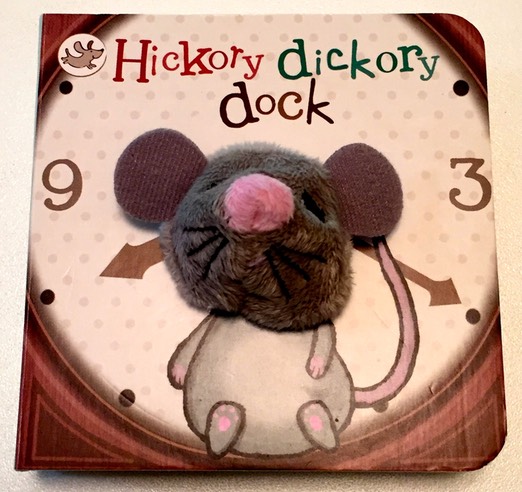
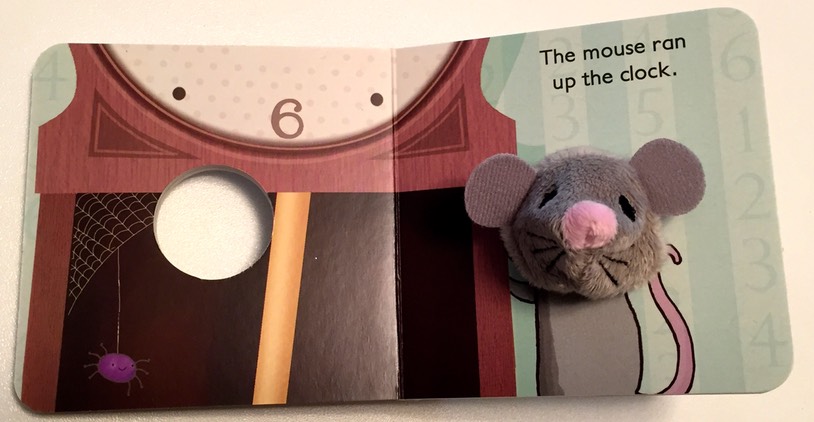
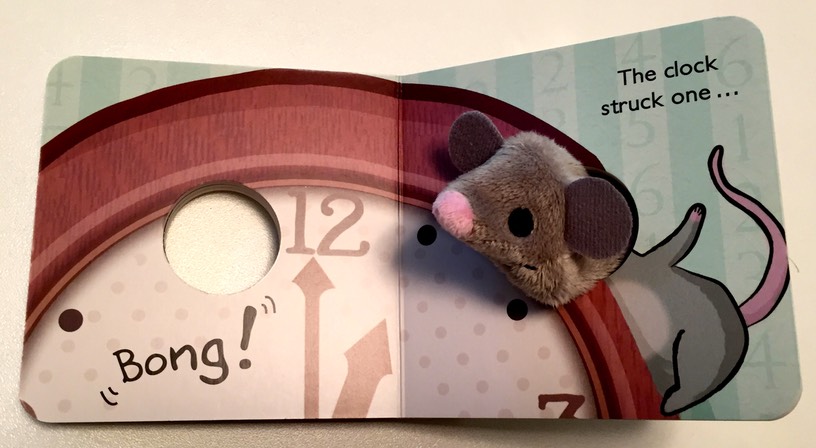
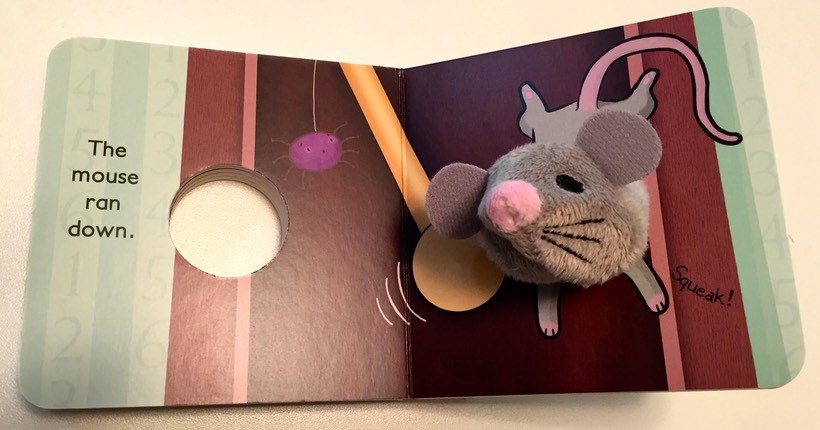
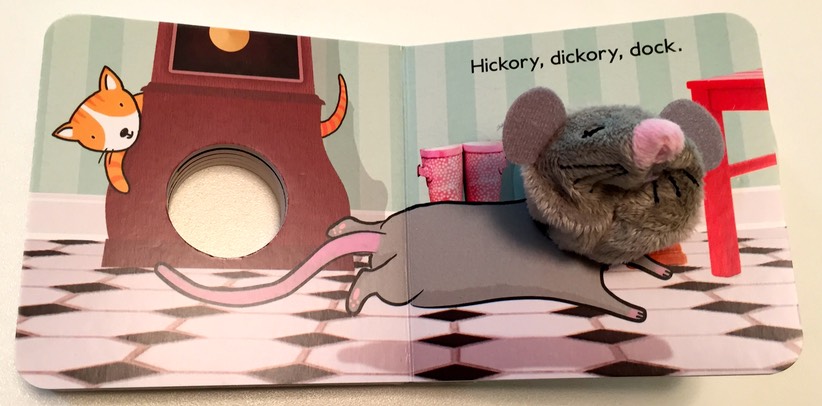
It makes for a cool finger puppet book, don’t you think?
Here’s another counting rhyme:
“Eenie, meenie, miny, moe
Catch a tiger by the toe.
If he hollers let him go,
Eeny, meeny, miny, moe.
Out goes one,
Out goes two,
Out goes another one
And that is you!”
According to my research, it dates back to the 1850s and also uses the Celtic words for counting. As you count each other off, “And that is you!” means you’re out. You keep going until there’s only one kid standing.
When we were kids, by today’s standards toys were few and far between, so imagination and the ability to remember rhymes were our decidedly low-tech devices. Because many of these games also required physical activity, we were a much more energetic bunch.
Think of this one:
“Ring around the roses,
A pocket full of posies,
Ashes! Ashes!
We all fall down!”
In this game, the kids hold hands, and chant the rhyme as they skip around in a circle. At “We all fall down!” everyone falls to the ground – and hilarity ensues! Silly game but it works. Blake knows what comes after “Ashes! Ashes!” As I said, hilarity ensues, followed by: “Again!”
The history of this rhyme is a bit vague, ranging from pagan origins to the 20th century version, which was associated with the Great Plague of London in 1665. The disease, which was the last epidemic of bubonic plague in England, killed some 100,000 residents of the city. “Ring around the roses” refers to the rosy rash that was the early symptom of the plague. People would carry “a pocket full of posies (medicine and herbs)” as protection and to ward off the smell of death. Of course, the posies didn’t always work, so “Ashes! Ashes! We all fall down!”
Heads of state were frequent targets for nursery rhymes. Here’s a particularly bloody one.
“Mary, Mary, quite contrary,
How does your garden grow?
With silver bells and cockle shells,
And pretty maids all in a row.”
One account says it may be about Bloody Mary, Henry VIII’s daughter, who was a staunch Catholic and caused the torture and murder of Protestants in England. The garden alludes to the graveyards that were filling with the martyrs. The “silver bells” were the thumbscrews, while “cockleshells” were instruments of torture attached to male genitals. Ouch. And it’s speculated that the “pretty maids” may refer to her execution of Lady Jane Grey.
Here’s a nonsense rhyme that makes for whimsical images:
“Hey, diddle, diddle,
The cat and the fiddle,
The cow jumped over the moon.
The little dog laughed
To see such sport,
And the dish ran away with the spoon.”
According to one explanation, in astronomy nearly all the characters in the rhyme show up in the night sky during the month of April, which is the planting season. The rhyme reminded early English farmers that it was time to plant their crops. Not such nonsense after all.
Cat: Leo
Fiddle: Lyra
Cow: Taurus
Moon: the Moon
Little Dog: Canis Minor
The dish: Constellation Crater
The spoon: The Big Dipper (Ursa Major)
This tickling game is always good for giggles. It’s an 18th century English nursery rhyme:
”This little piggy went to market.
This little piggy stayed home.
This little piggy had roast beef.
This little piggy had none.
This little piggy cried ‘Wee, wee, wee!’
All the way home.”
For those of you who may not remember, you wiggle each toe, starting with the big toe. The last piggy is the little toe, at which point, you wiggle it and tickle your way up to the little person’s tummy. Wait for squeals!
Here’s a version of “Gimme five!”
“Pat-a-cake, pat-a-cake, baker’s man,
Bake me a cake as fast as you can.
Roll it, and pat it, and mark it with a “B”
And put it in the oven for Baby and me!”
As you chant it, you clap your hands, then alternate with two-handed claps with the little tyke. You can also cross the hands when clapping with him. The earliest version of this game dates back to 1698 when it was first published in England, and is one of the oldest surviving English nursery rhymes.
Finally, it’s always nice to calm things down with a little English lullaby from the early 19th century:

“Twinkle, twinkle little star,
How I wonder what you are!
Up above the world so high
Like a diamond in the sky.
Twinkle, twinkle little star,
How I wonder what you are.”
Hope your inner child enjoyed our little skip and a hop down memory lane, along with bits of historical trivia. As you can see, nursery rhymes are often commentaries on the times. I wonder what a nursery rhyme would look like today?
“Here he comes, the brass tongued clown
Promising us sweets and cake.
But in the morning all we’ll have
Is a big fat bellyache.”
